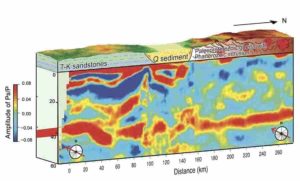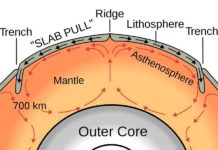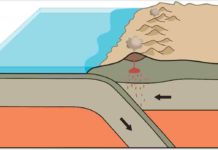
Today, the entire globe is broken up into tectonic plates that are shifting past each other, causing the continents to drift slowly but steadily. But this has not always been the case.
The earliest evidence for plate tectonic features which could have been localized does not signify when plate tectonics became a global phenomenon. So, when did plate tectonics go global?
A research team led by Dr. Wan Bo from the Institute of Geology and Geophysics (IGG) of the Chinese Academy of Sciences has revealed that plate tectonics went global 2 billion years ago. The study was published in Science Advances on August 5.
The Earth is 4.56 billion years old. Although geologists have argued for plate tectonics being operational as early as 4 billion years ago, this is the first study to provide global evidence.
Subduction, the pushing of one plate beneath another when two plates converge, is one of the telltale signs of plate tectonics. Usually dense ocean crust is pushed back into the deep Earth as continents ride high. But when two continents collide, something is gonna happen.
The best known continental collision on Earth today is the Himalayan Mountains: as India slams into Eurasia, the smaller continent of India is pushed beneath the megacontinent. Geologists can image this collision with seismology: waves from earthquakes show Eurasia ramping up on top of India.
The IGG researchers designed a seismological study to investigate the structure of ancient crust at one of the oldest and most stable region, Ordos. Now, it is mostly flat without any high mountains. However, they found essentially the same deep structure. “Even though the dipping structure we found was identical to what we see in the Himalaya today, what we were looking at was 2 billion years old,” said Dr. Wan.
On top of their evidence of ancient subduction in China, the researchers demonstrated that several continents with seismological studies showed similar dipping structures 2 billion years ago too.
“The authors do a very nice job of describing their results and placing them into a larger scale context,” said Prof. Peter Cawood, an expert in ancient plate tectonics at Monash University who wasn’t involved in the study.
Even though subduction may have occurred here or there on Earth early on, it was not until 2 billion years ago that we can say plate tectonics became a global network.
“It’s like the invention of the world wide web,” said co-author Dr. Ross Mitchell of IGG. “Even though the internet existed in some form or another for decades, it wasn’t until the 1990s that the Information Age began.” So it was with plate tectonics.
Seismic evidence of subduction from six continents at this age is interpreted as the oldest evidence of global plate tectonics. The continental connections identified can be linked in a plate network that resulted in the assembly of Nuna, likely Earth’s first supercontinent.
“Immediately following plate tectonics going global, Earth formed arguably its first supercontinent,” said Dr. Mitchell. “This coincidence is too compelling to ignore.”
Reference:
“Seismological evidence for the earliest global subduction network at 2 Ga” Science Advances (2020). DOI: 10.1126/sciadv.abc5491
Note: The above post is reprinted from materials provided by Chinese Academy of Sciences.










